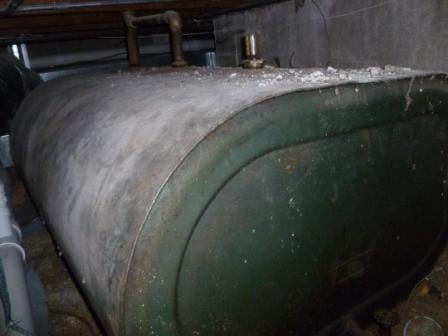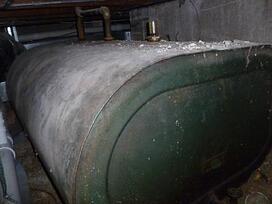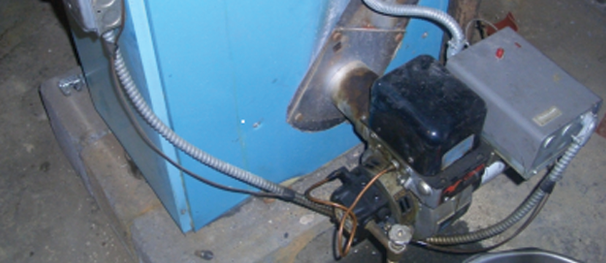Get Your Home Heating Oil Furnace Ready For Winter - Part II
Part I of this series talked about tips for inspecting your heating system and fuel tank, and treating your fuel oil to prepare your home heating oil...
3 min read
Erik Bjornstad : Dec 5 2017

This blog is for the portion of the country that still uses heating oil for their homes. That's about 6 million households across the country burning nearly 4 billion gallons of heating oil a year. Oil furnace systems do require a certain amount of upkeep to keep them running in proper order. And since the heating oil is the most essential part of the system, it stands to reason that it should require a bit of attention to keep it trouble-free.
 The positive and negative characteristics of home heating oil stem from its physical properties. The diesel fuel oil that goes into your furnace system is pretty similar to the diesel fuel burned on the road by big-rig trucks. They’re both designated as #2 diesel fuel oil, and they're both classified as distillate fuel oils, meaning they aren't as dirty and full of contaminants as the residual heavy fuel oils used by industry and power generation. Home heating oil used to be allowed to have a higher sulfur content but is now much cleaner than it used to be. That's good for the environment, but also means that the heating oils of today are more prone to certain problematic issues.
The positive and negative characteristics of home heating oil stem from its physical properties. The diesel fuel oil that goes into your furnace system is pretty similar to the diesel fuel burned on the road by big-rig trucks. They’re both designated as #2 diesel fuel oil, and they're both classified as distillate fuel oils, meaning they aren't as dirty and full of contaminants as the residual heavy fuel oils used by industry and power generation. Home heating oil used to be allowed to have a higher sulfur content but is now much cleaner than it used to be. That's good for the environment, but also means that the heating oils of today are more prone to certain problematic issues.
Like gelling in the winter.
Diesel truckers know that the most important thing they need to watch out for in the winter is fuel gelling. How many homeowners have the same concerns with their heating oil?
That was a leading question because the answer is “not as many as should”. #2 heating oil still contains paraffin waxes that will come out of solution when the fuel gets too cold. The common description is to say that the fuel oil “froze”, but it didn’t really freeze, it gelled up because of the wax in the heating oil.
Commonly, heating oil will start to cloud at around 32 degrees F. This is the early part of the gelling process as the paraffin waxes in the heating oil become insoluble and appear in the fuel, giving it a cloudy appearance. As the cold weather continues, more and more paraffin waxes will drop out, creating the real potential for clogged oil lines, oil filters and oil valve issues.
If you don’t want to be without heating in the dead of winter, there are a few simple preventing steps you can take for your system.
The old school solution for this problem was to use kerosene with the heating oil. But kerosene is more expensive than it used to be, leading the recommendations to shift towards the use of dedicated anti-gel fuel treatments.
Diesel truckers know the importance of anti-gel additives in their fuel to keep their rigs running. Home heating oil systems will benefit just as much. If you have a 500 gallon tank, adding a quart of two of an anti-gel will keep the wax dispersed and out of the trouble zone during cold weather. It’s a pretty cost-effective preventive maintenance measure.
For both trucks and heating systems, they don’t shut down just because the fuel oil gets cold. They shut down because the filters get plugged up with wax, restricting the amount of fuel available for combustion. If the system filter is located outdoors, it becomes plugged with wax much more easily. The simple solution, then, is to install a new filter housing in an indoor location, and move the filter there.
Wrapping your outdoor pipes with insulation will reduce the surface area of piping that’s exposed to the cold weather. If they are wrapped well (i.e. all seams and opening are sealed), it can go a long way to preventing the absorption of moisture that contributes to system gelling and freezing.
Replacing the fuel oil line with one that larger than the standard 3/8” diameter is a really effective way to keep the oil flowing during cold weather. A ½” line may not seem much larger, but the total area is actually 78% larger than the smaller line. And that would probably be enough to ride out even the coldest weather snaps without a freezing problem that would normally deprive you of heat.

Part I of this series talked about tips for inspecting your heating system and fuel tank, and treating your fuel oil to prepare your home heating oil...

Bell Performance has been based in Florida ever since company founder Robert Bell moved down from Norfolk, Virginia in the 1930s. There’s not a lot...

Spring is here! The vernal equinox on March 21st marks the official first day of spring and the weather should be warming up. So you'll be using...